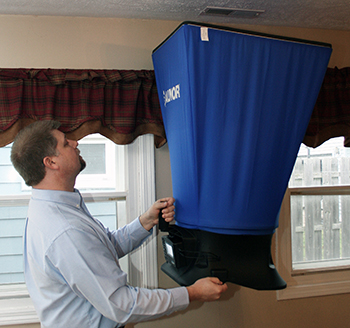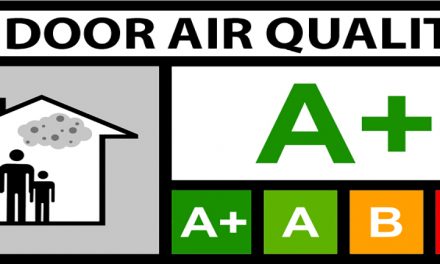Test Instruments
Before you can measure airflow, you will need two additional test instruments for your static pressure testing kit. They include:
- Air balancing hood ‘ the quickest and easiest way to measure airflow from a register or grille.
- Anemometer (Hot-wire, thermal, or rotating vane) ‘ for measuring inside a duct or hard-to-access registers and grilles.
The addition of these test instruments will round out your airflow measurement arsenal and allow you to expand where and how you measure the system.
Different Airflow Measurements
As you measure airflow, it helps to classify it into four categories. We name each based on the measurement location or source of the airflow reading. Once you understand the four airflow types, you can see how they work together.
1. Required Airflow is the amount of airflow a system needs. It establishes a target to aim for. There are many applications for required airflow, the most common of which is fan airflow. Other applications include individual room airflow and outside air. These values act as a baseline that you will compare all your measurements against. Comparing design airflow to measured airflow enables you and your customers to quickly understand the meaning of each reading.
2. Fan Airflow is what happens at the air-handling equipment and is the foundation of proper system operation. The quickest and easiest way to determine fan airflow is to plot it on the manufacturer fan tables (found in most installation instructions). The fan speed setting and measured total external static pressure (TESP) are two pieces of information you’ll need. Find these two points on the fan table and intersect them to determine fan airflow. It’s important to note that the blower must be clean. If it is dirty, clean it first, and then proceed with your tests.

David Richardson demonstrating how to use an air balancing hood to measure airflow.
3. Delivered Airflow delivers comfort and efficiency into the living space and determines true system performance. The air balancing hood is the main test instrument necessary to measure it. The anemometer measures grilles and registers you can’t access with the hood. This measurement moves you beyond your competition and allows you to see hidden defects that you can show to your customers. If you want to see how HVAC systems work in the real world, measure airflow into the living space.
4. Outside Air provides for HVAC system ventilation needs. It should enter a system intentionally, such as through a dedicated outside air duct, economizer, energy recovery ventilator (ERV), heat recovery ventilator (HRV), or ventilating dehumidifier.
You can measure outside air with a traverse (ncilink.com/TraverseTools). The source will determine if you need to traverse with a thermal or a rotating vane anemometer ‘ each application is different. You can traverse a dedicated duct with a thermal anemometer or traverse an economizer inlet with a rotating vane anemometer.
Diagnose Airflow Readings
Since airflow measurement is rarely perfect, there is usually a tolerance most standards allow. The most common value is ?10% of the design or required airflow. When you diagnose your readings, you’re trying to get as close to the required airflow as possible. However, sometimes this isn’t possible. The percentage allows you some cushion in those situations.
Click below for the next page













Recent Comments